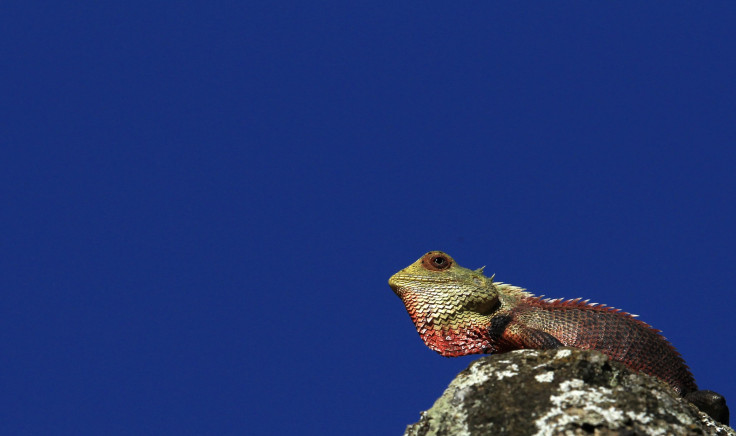Biologists Discover 11 Species Of Panther Chameleon In Madagascar

Among the most biodiverse regions of the Earth, Madagascar is home to many species including the panther chameleons. The scientists earlier had considered these unique specie of chameleon as one but in a recent development they have discovered that Madagascar’s panther chameleon population is actually composed of 11 different species. The most significant and unique characteristic of the chameleons is their ability to change their colour to adapt with their surrounding environment, providing them the camouflage. The range of hues is limited and depends upon the specie.
Madagascar’s panther chameleons are considered more unusual since they have a very wide range of colours depending upon the part of the island they reside in. They shift from red to green to orange in some part of the island while in other they seem to be blue in colour. To solve the mystery behind the expression of such wide and unusual colour variation, the researchers from University of Geneva over the course of two expiditions extracted blood samples from 324 panther chameleons while photographing them as well. After returning to their labs from the forests of Madagascar, they carried out DNA sequencing on these collected blood samples. What they didnt expect was that, the panther chameleon which were earlier considered to be one species was actually 11 genetically distinct species.
The study findings established that there is a presence of strong genetic structure giving rise to geographically restricted species with very low rate of interbreeding within them. Furthermore, the DNA sequencing also indicated that the colour variation expressed by each specie is unique for their own, suggesting the presence of seperate genetic lineage. The researchers add, "This case of hidden speciation confirms a major characteristic of Madagascar: it is amongst the most diverse places for life on Earth; a biodiversity hotspot."
The findings of the study published in the journal Molecular Ecology will now help the local biologists as well as the trade managers to protect the diversity of these reptiles' by preventing the over-harvesting among them. The most worrying matter in hand for the biologist is the deforestation in Madagascar which is currently is a home for 400 species of reptiles, 300 species of birds, 300 species of amphibians and 15,000 species of plants. It is a matter of concern because 80 to 90 percent of these species found in Madagascar are non-existence in other parts of the world and hence their existence is highly threatened.
To contact the writer, email:ruchira.dhoke@gmail.com






